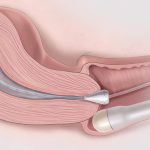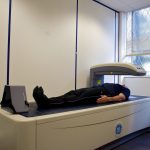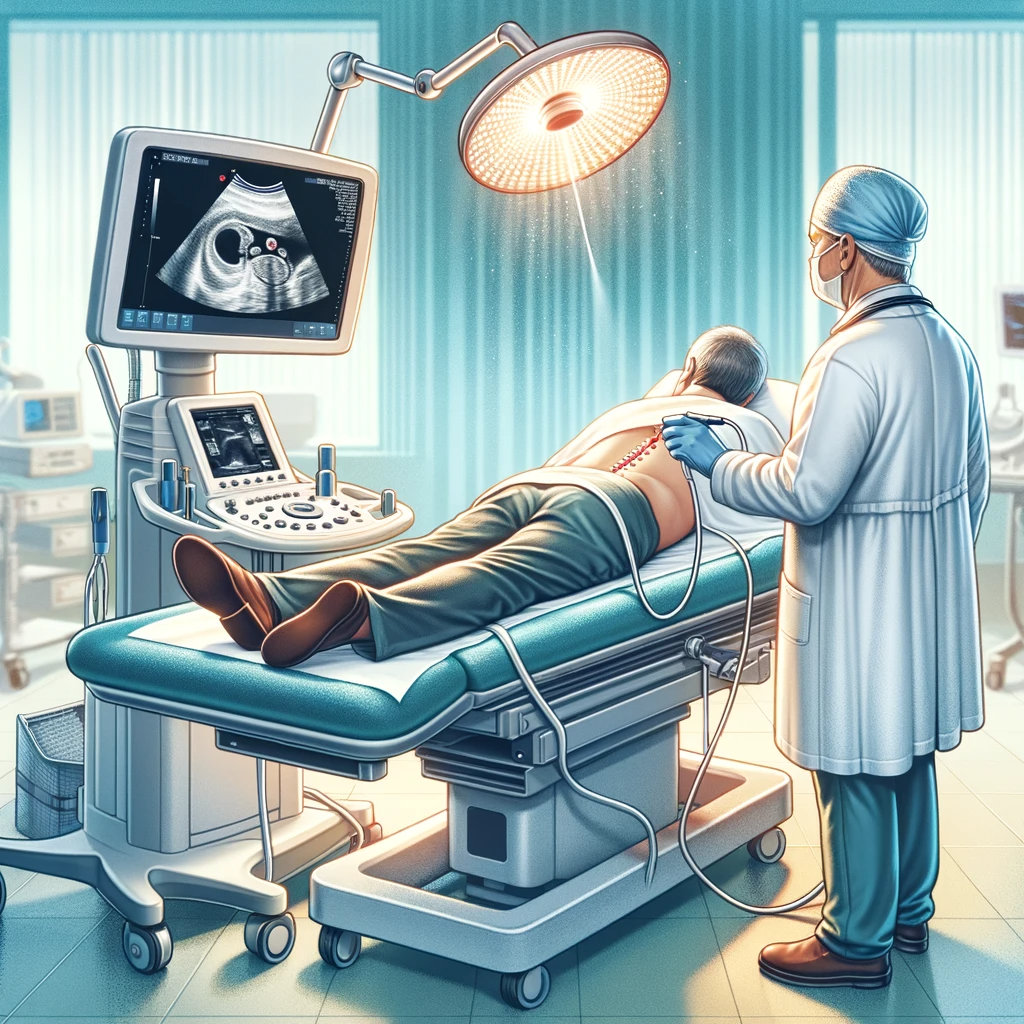
A kidney biopsy is a procedure to take a small piece of tissue from the kidney. A specialist doctor (pathologist) looks at it under a microscope and can tell if you have kidney cancer and which type it is. Knowing this helps your doctor decide on the best treatment for you.
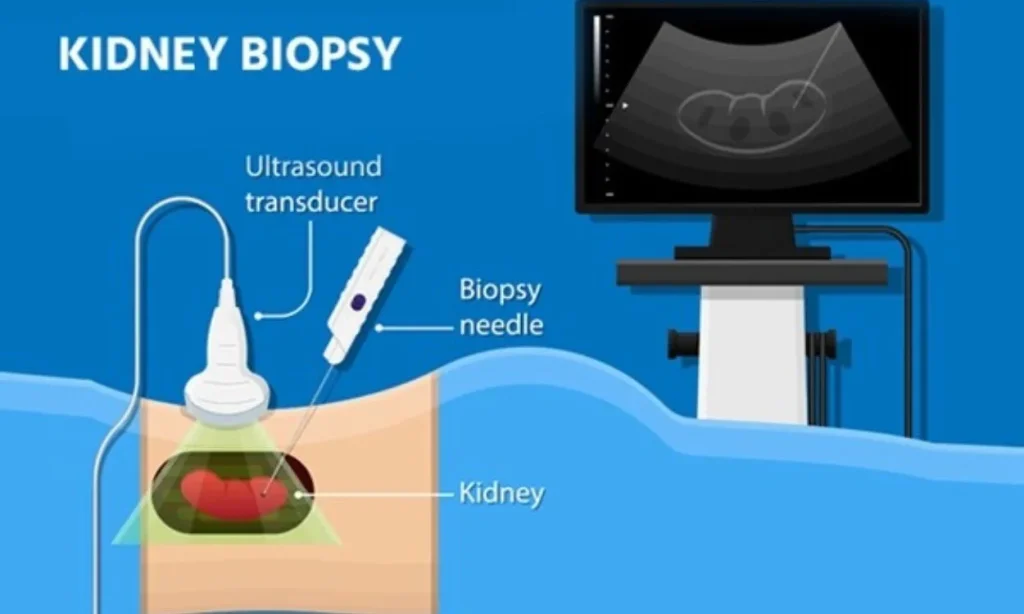
Why you might have a kidney biopsy
Your doctor will ask you to have a kidney biopsy to:
- find out if you have kidney cancer if other tests haven’t been clear
- help them decide if a small kidney cancer can be watched before being treated (active surveillance)
- tell them what type of cancer you have before you have microwave ablation
 , radiofrequency ablation
, radiofrequency ablation  or cryotherapy
or cryotherapy 
- help them choose the best treatment if your cancer has spread to other parts of your body
You do not normally have a kidney biopsy if you are going to have all or part of your kidney removed.
Preparing for your test
A kidney biopsy is normally done in the radiology (x ray and scanning) department.
You may go into hospital, have the biopsy and go home the same day. This is called a day case procedure. Occasionally your doctor may want you to stay in hospital the night after the biopsy.
Your doctor will ask you to have some blood tests before the biopsy. This is to check your general health and that your blood is clotting normally. You may also have a urine test. This is to check that you don’t have an infection.
The hospital will tell you how to prepare for the biopsy. This may include:
if you can eat or drink beforehand
if you need to stop any medicines beforehand
what you need to bring with you
any instructions for going home afterwards
What happens
Your doctor will explain what happens during a kidney biopsy and any risks of having it done. Then they ask you to sign a consent form.
You lie on your front on a couch or bed to have the biopsy. Your doctor uses an ultrasound scanner to check the position of your kidney.
Sometimes your doctor may be able to see the kidney better using CT scans instead of an ultrasound scan. They can do the same procedure in a CT scanner if this is the case.
They clean your skin with some antiseptic. They then inject local anaesthetic  into the skin over the kidney. This makes the area go numb. It may sting a little at first.
into the skin over the kidney. This makes the area go numb. It may sting a little at first.
When the area is numb your doctor puts a thin hollow needle through your skin and into the kidney. Sometimes they may ask you to hold your breath for 5 to 10 seconds when they push the needle in and take it out. This is because the kidneys move slightly when you breathe. Your doctor will tell you when to hold your breath if they want you too. But this isn’t always necessary.
When the needle is in your kidney your doctor will take a small sample (biopsy) of it. They may do this 2 or 3 times. You might feel some pressure when they do this. It shouldn’t hurt but tell your doctor if you do feel any pain.
Your doctor sends the biopsy to a specialist doctor (pathologist) who looks at it under a microscope. They will be able to tell if it is cancer and if so, what type.
After your biopsy
After the biopsy you have a small dressing put on the wound. Your nurse will check the dressing and your blood pressure often. You can normally take the dressing off the next day.
You need to stay in bed for 4 to 6 hours after the biopsy. So you might want to take a book or something you can do while lying down.
The biopsy area may be sore and uncomfortable for a while. Tell your nurse if you need some painkillers.
You will need to pee several times before you go home. This is to check you are not having any problems after the biopsy.
It is normal to get some blood in your urine for a few days after the procedure. But your nurse checks there’s not too much blood before you go home.
When you are ready to go home your nurse will tell you:
when you can go back to your normal activities
when you will get your results
who to contact if you have any problems
when you will have a follow up appointment
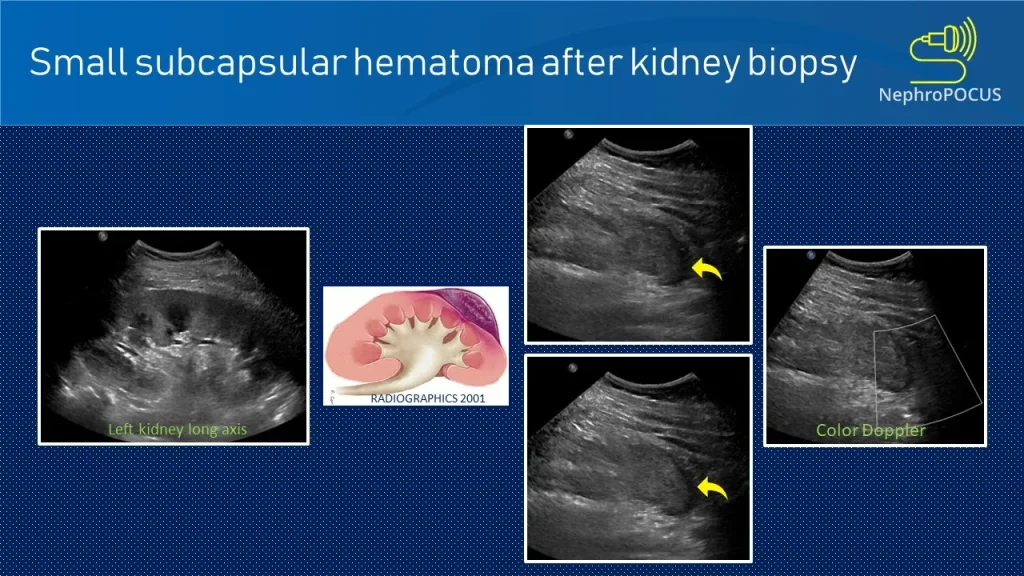
Possible risks and complications
Having a biopsy is generally safe but all medical procedures have some risks or complications. Your doctor makes sure the benefit of having the biopsy outweighs these risks.
After a kidney biopsy, bleeding is the most common complication. This is usually only a small amount and soon stops. Blood in your pee is called haematuria. You can also get a collection of blood around the kidney (haematoma). If you are bleeding a lot you may need to have extra blood (blood transfusion  ) to make up for what you have lost. But this is rare.
) to make up for what you have lost. But this is rare.
Other rare complications can include:
infection in the wound
damage to the kidney
damage to parts of the body near the kidney
Sometimes your doctor may not be able to get enough kidney cells in the needle. This may mean you need to have the biopsy again.
Getting your results
The result of your biopsy may take a week or so to come back. Contact your doctor if you haven’t heard anything after a couple of weeks.
Waiting for results can be an anxious time. You might have the contact details for a specialist nurse (CNS) who you can speak to. It can help to talk to a close friend or relative about how you feel.


